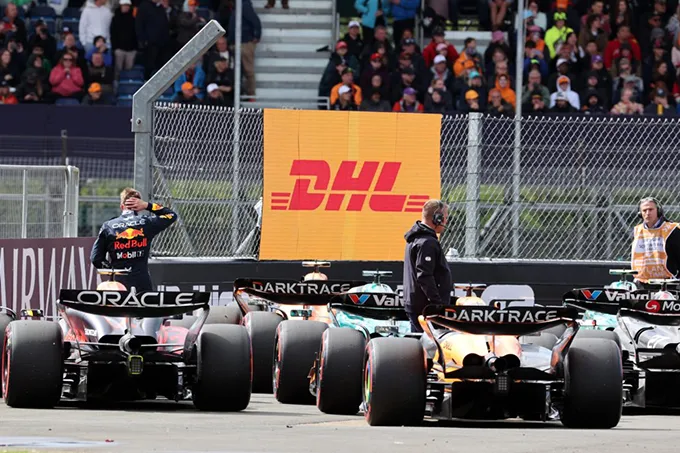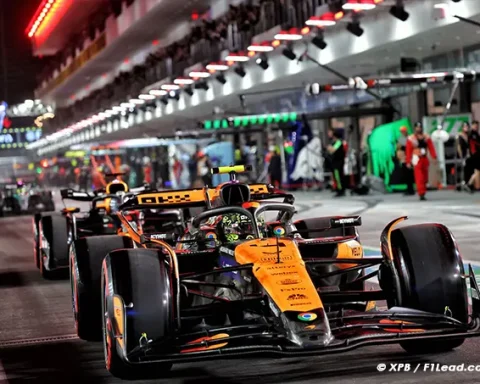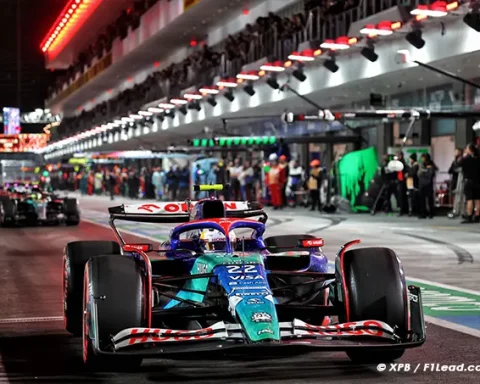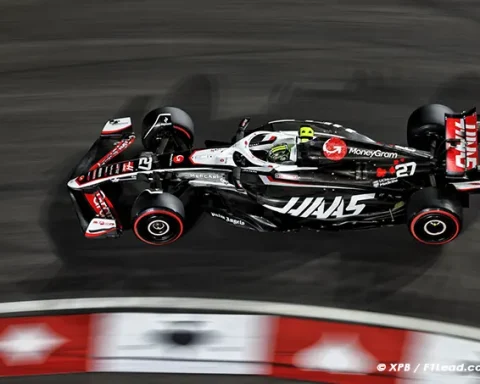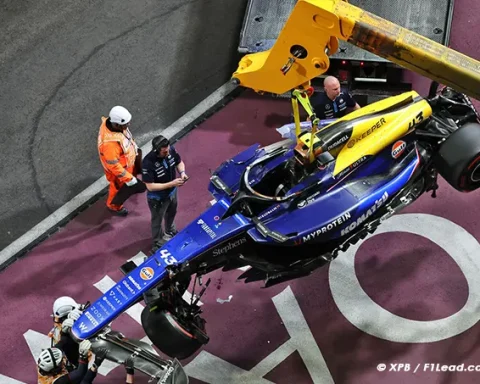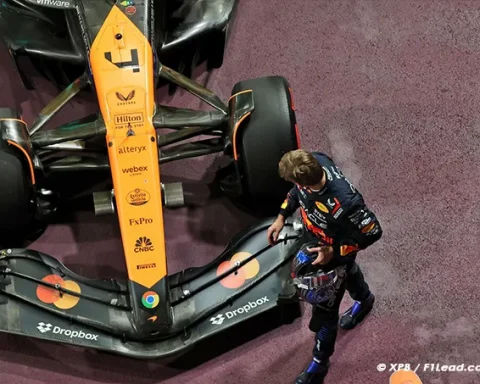The F1 parc fermé rule ensures fairness but faces challenges as the T-Tray controversy raises questions about its enforcement and implications.
“Parc fermé”: two French words, untranslated, widely used throughout the F1 paddock.
Parc fermé is F1’s invisible fortress. Under the watchful eye of stewards and cameras, each car is scrutinized, protected, and sealed. The goal? To ensure fair competition from qualifying onward, avoiding any surprises or cheating.
It’s precisely this parc fermé (and its violation) at the heart of the ‘T-Tray affair.’ Red Bull is accused of installing a device enabling cockpit adjustments to the car’s ride height — a clear breach of parc fermé if proven, sparking fury from other teams, notably McLaren F1.
The term “parc fermé” refers to a set of rules defining what a team can and cannot do to its cars during specific periods leading up to a Grand Prix, ensuring the car remains as raced, ready for inspection (or challenge by a competitor).
“Parc fermé is a concept across many motorsport disciplines, though it takes various forms,” explains FIA technical delegate Manuel Leal.
“In WRC or Rally Raid, for instance, it’s a physical area where cars are grouped, but in F1, it’s both a physical space — seen at the end of sessions when cars are parked in a designated pit lane zone — and a virtual space where cars return to teams with only limited work permitted.”
Leal provides further insight into this rule, motivated by both technical and financial concerns.
“Essentially, the rules prevent teams from altering their cars between qualifying and the race,” he adds. “The regulations aim to ensure fairness by limiting modifications and also to control costs, so teams aren’t designing custom cars just for qualifying.”
The parc fermé rules are outlined in Article 40 of the F1 sporting regulations, with point two specifying that “each car is considered in parc fermé from the moment it leaves the pit lane for the first time during qualifying until the start of the race. Any car that does not leave the pit lane during qualifying is considered in parc fermé at the end of Q1.”
In sprint format, parc fermé is lifted between the Sprint and qualifying, allowing teams to adjust settings as needed, adding unpredictability to the rest of the weekend — an innovation introduced this year.
Once in parc fermé, what types of work are permitted? Leal explains that most authorized tasks relate to routine maintenance or safety, such as brake deglazing, adjusting front wing flap angles, non-destructive testing (NDT) to check for possible damage, and repairing damaged bodywork. Certain fluids can be replaced, engines started, and adjustments made for driver comfort or weather conditions, all under the constant scrutiny of FIA scrutineers and technical personnel.
Any work not listed in Article 40.2 may only be conducted with the Technical Delegate’s approval following a written request from the team. Replacement parts must clearly be identical in design, mass, inertia, and function to the original. Parts removed from a car are also retained by the FIA for possible later inspection.
An army of scrutineers keeps a close watch over the cars…
In addition to the FIA technical staff, who may be called upon for checks, FIA scrutineers maintain continuous oversight, with one scrutineer assigned to each car for the duration of the weekend.
“We have this physical space after a session where cars are weighed, and then a virtual space when they return to the teams,” Leal explains. “At that point, 20 scrutineers monitor every operation performed on the car and record everything for later verification. Additionally, at the start of the season, teams must submit a list of standard parc fermé operations they typically carry out as per regulations, which we approve or not. Every car is different, so they may indicate that to inspect the engine’s combustion chamber, they must remove the spark plugs, which involves removing other parts. This list is provided to scrutineers to track all activities.”
After qualifying, at least three cars are selected for additional inspections. Once informed, the team in question cannot remove the car from parc fermé until checks are complete.
The scrutineers’ presence isn’t the only safeguard in place.
“We also have a camera above each car that monitors and records,” Leal explains. “It’s essentially standard video surveillance. We monitor in real time, with people constantly observing, and we can see everything happening with the car.”
All operations performed by a team must be completed within two hours after qualifying and the Sprint. Then, all cars must be covered and ready to receive FIA seals, ensuring their security until the following day.
“Engines and gearboxes are, of course, sealed,” adds Leal. “But we have the authority to place seals wherever we see fit to track any concerns. If something is critical and difficult to monitor live, even with cameras, we add a seal. Typically, these cover gearboxes, power units, energy recovery systems, body panels, the driver’s seat, but we can seal anywhere necessary. Over a season, we order up to 40,000 seals, underscoring the rigorous level of our checks.”
How to Break Parc Fermé… Legally
What happens if a team opts to break parc fermé rules to make adjustments and start from the pit lane? How can it be ensured they still operate within the law without compromising vigilance?
“They have three hours after qualifying to submit requests,” explains Leal. “If they believe their setup is ineffective, want to change the car’s specifications, or for any other reason, they can declare it. Technical delegate Jo Bauer then prepares a report listing any replaced parts in case of failure or damage, and another report on parc fermé violations detailing what the team did. This is all made public to ensure transparency.”
“FIA personnel usually conduct checks on settings and specifications on Sunday morning, just to ensure nothing escaped the scrutineers, which, honestly, is rare. But it’s an extra layer of vigilance to confirm that teams adhered to regulations, ensuring full fairness and, barring imperative reasons, we start the race with cars as they qualified.”
- You may also like>Leclerc: Verstappen’s Aggression Brings Thrill to F1
- Also make sure you follow us on social media>Facebook and>Twitter
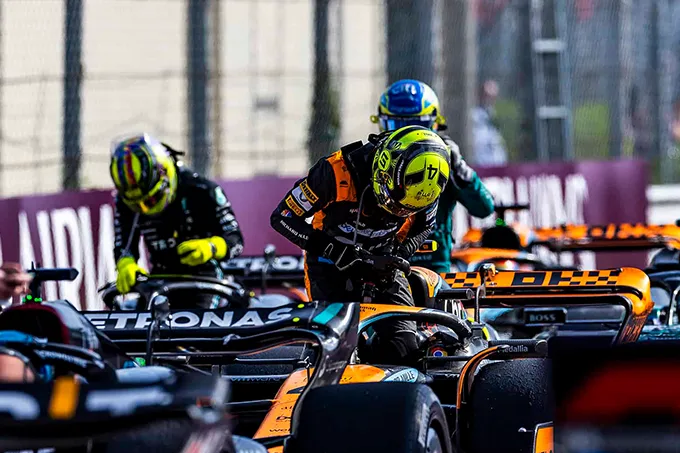
T-Tray Controversy Puts F1’s Parc Fermé Rules to Test T-Tray Controversy Puts F1’s Parc Fermé Rules to Test f1 2024 T-Tray Controversy Puts F1’s Parc Fermé Rules to Test
